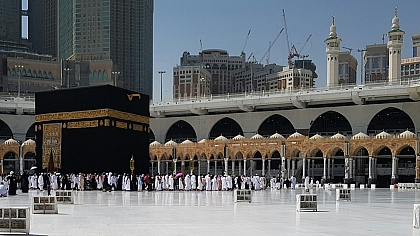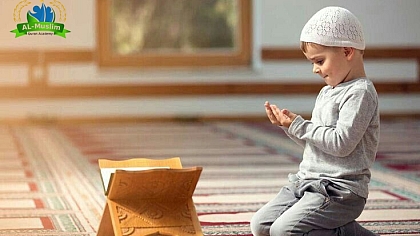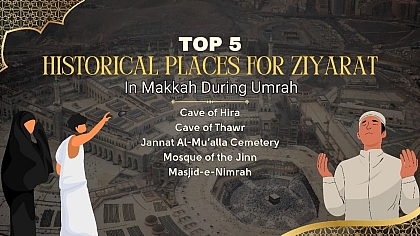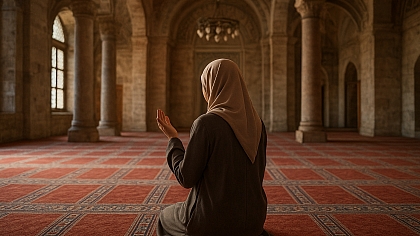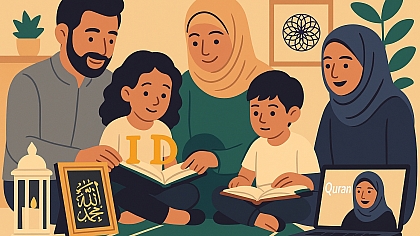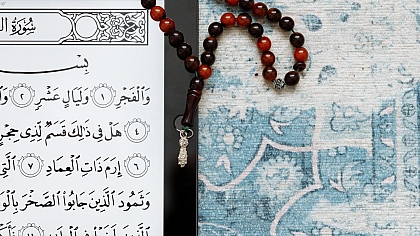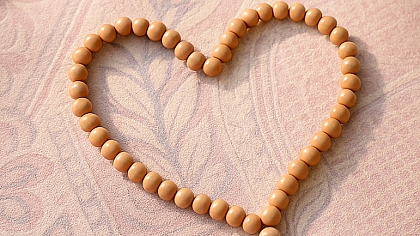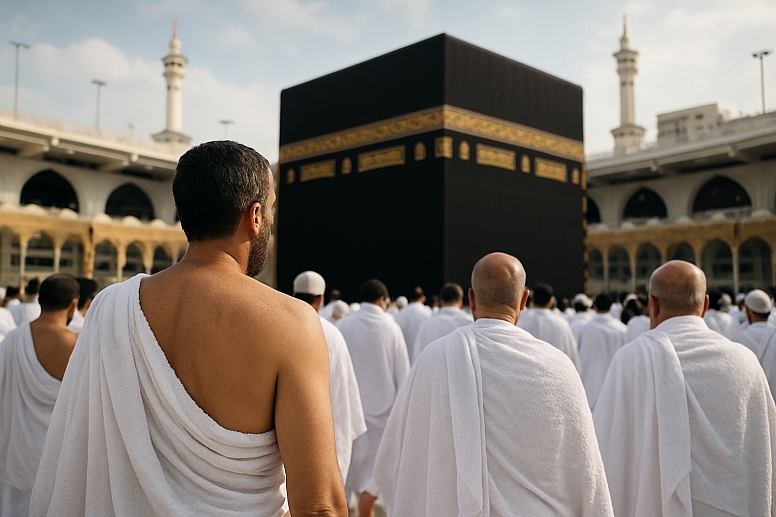
Hajj Pilgrimage Guide: Steps, Rituals & Meaning
Hajj is the annual Islamic pilgrimage to Makkah. It is a journey every adult Muslim must undertake at least once in their lifetime if they are physically and financially able. Hajj is one of the Five Pillars of Islam. It occurs in the last month of the Islamic lunar calendar, Dhul-Hijjah.
The Story of Prophet Ibrahim (Alaihis Salaam): The Foundation of Hajj
The rituals of Hajj are not random acts; they follow the footsteps of Prophet Ibrahim (Abraham), his wife Hajar, and their son Ismail (Alaihimus Salaam). Their profound tests of faith are the reason for the rituals and provide the deep meaning behind every step a pilgrim takes.
- Building the Kaaba: Allah commanded Ibrahim and Ismail to build the Kaaba as the first house for worshipping One God.
- Hajar's Trust: Left in the desert with her infant son, Hajar ran between the hills of Safa and Marwa seven times in her desperate search for water. Her unwavering faith was rewarded with the miracle of the Zamzam well.
- The Ultimate Test: Allah commanded Ibrahim to sacrifice his son. Both father and son demonstrated their complete readiness to obey God's command. At the last moment, Allah provided a ram to sacrifice instead, showing that He values obedience and intention above all.
Hajj is a journey to walk in their footsteps. When you perform Sa'i, you remember Hajar's run and her trust in God. When you stone the pillars (Ramy), you remember Ibrahim stoning the devil when he tried to tempt him to disobey. When you sacrifice an animal (Qurbani), you remember Ibrahim's willingness to give up what he loved most for God. This connection transforms the physical journey into a profound spiritual experience of unity, sacrifice, and devotion.
The Stages of Hajj at a Glance
This table provides a simple overview of the main rituals and their order.
| Day | Key Rituals | Location |
|---|---|---|
| Day 1 | Enter the state of Ihram. Perform Tawaf al-Qudum (Arrival Tawaf) and Sa'i. | Makkah |
| Day 2 | Travel to Mina and spend the day in prayer and reflection. | Mina |
| Day 3 | Perform Wuquf (standing) at Arafat until sunset. Travel to Muzdalifah to spend the night and collect pebbles. | Arafat, then Muzdalifah |
| Day 4 (Eid al-Adha) | Stoning of the largest pillar (Jamrat al-Aqaba). Perform Qurbani (sacrifice). Shave or cut hair (Tahalul). Perform Tawaf al-Ifadah. | Mina, then Makkah |
| Days 5 & 6 | Stone all three pillars. Remain in Mina. | Mina |
| Before Departure | Perform Tawaf al-Wadaa (Farewell Tawaf). | Makkah |
The Rituals of Hajj in Detail
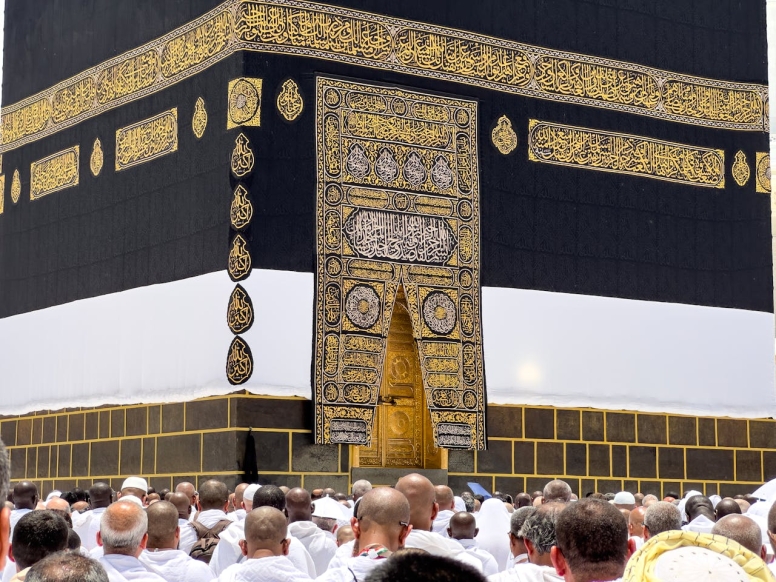
1. Ihram: The Sacred State
Ihram is the special state of purity and intention a pilgrim enters to begin Hajj. It involves both an internal and external preparation.
How to Enter Ihram:
- Intention (Niyyah): The pilgrim makes a sincere intention in their heart to perform Hajj.
- Purification: A full-body wash (ghusl) is performed for cleanliness.
- Ihram Clothing: Men wear two simple, white, seamless cloths. Women wear their usual modest dress that covers everything except the face and hands. This uniform dress makes everyone equal, with no difference between the rich and the poor.
Restrictions During Ihram: To maintain focus on worship, pilgrims must not:
- Cut their hair or nails.
- Use perfume or scented products.
- Hunt or harm any living creature.
- Argue, fight, or use bad language.
- Engage in marital relations.
- Men cannot wear stitched clothes or cover their heads.
2. Tawaf: Circling the Kaaba
Tawaf is the act of walking seven times counterclockwise around the Kaaba, the sacred building at the center of the Grand Mosque in Makkah.
Significance: The Kaaba is the "House of Allah" and the direction Muslims face for daily prayers. Circling it shows the unity of Muslims worshipping one God. It is a tradition started by Prophet Ibrahim and his son Ismail (Alaihimus Salaam).
How to Perform Tawaf:
- Make the intention for Tawaf.
- Start at the Black Stone (Hajar al-Aswad). If possible, touch or kiss it, or simply point towards it.
- Walk around the Kaaba seven times, praying and remembering Allah.
- Each circle starts and ends at the Black Stone.
A Deeper Look at the Kaaba and the Black Stone
The Kaaba is more than a building. It is the spiritual heart of Islam. Muslims around the world face towards it five times a day for their prayers.

The Black Stone (Hajar al-Aswad) is set in one corner of the Kaaba. Islamic tradition holds that this stone came from heaven. It was once pure white but turned black over time by absorbing the sins of those who touched it, seeking forgiveness.
Pilgrims do not worship the stone. They see it as a sacred marker, the starting point for their seven circles around the Kaaba. Touching it is a way to begin the ritual of Tawaf, but if the crowd is too large, they simply point towards it.
Every year, a new cloth called the Kiswah covers the Kaaba. This cloth is made of black silk and gold thread. Skilled artisans in Saudi Arabia write verses from the Quran on it. Changing this cloth is a special ceremony that happens once a year.
3. Sa'i: Walking Between Safa and Marwa
Sa'i is the ritual of walking seven times between the two small hills of Safa and Marwa.
Significance: This act commemorates the struggle of Hajar, the wife of Prophet Ibrahim (Alaihis Salaam). She ran between these hills seven times searching for water for her infant son, Ismail. Her faith was rewarded with the miracle of the Zamzam well, which still flows today.
How to Perform Sa'i:
- Start at the hill of Safa and make the intention.
- Walk towards Marwa. This is one trip.
- Walk back to Safa. This is a second trip.
- Complete seven trips (ending at Marwa).
Day 2: The Valley of Mina - A City of Prayer and Reflection
After the first day in Mecca, pilgrims travel to Mina, a large valley about 5 kilometers away. During Hajj, this valley transforms into a vast city of millions of identical white tents.
This day in Mina is not merely a wait between rituals. It is a crucial time for spiritual preparation. Pilgrims use this time for:
-
Prayer and Reflection: They pray, read the Quran, and contemplate the significance of the journey ahead.
-
Mental Preparation: They rest and prepare their hearts and minds for the most important day of Hajj—the Day of Arafat.
-
Community: The simple life in the uniform tents reinforces the lesson of equality. There are no special accommodations; everyone lives together in the same way, focused on the same spiritual goal.
4. Wuquf at Arafat: The Peak of Hajj
The "Standing at Arafat" is the most important part of Hajj. It takes place on the 9th day of Dhul-Hijjah on a vast plain called Arafat.
Significance: This day is about forgiveness, mercy, and sincere prayer. The Prophet Muhammad (Sallallahu Alaihi Wasallam) said that Hajj is Arafat. If a pilgrim misses the standing at Arafat, their Hajj is invalid.
Activities:
- Pilgrims stand from noon until sunset.
- They pray, make heartfelt supplications (dua), and ask Allah for forgiveness.
- They listen to a sermon delivered from Mount Mercy (Jabal al-Rahmah).
5. Muzdalifah and Stoning the Devil (Ramy)
After sunset at Arafat, pilgrims travel to Muzdalifah.
- They spend the night under the open sky.
- They pray Maghrib and Isha together.
- They collect small pebbles to use in the next ritual.
The next morning (the 10th of Dhul-Hijjah, Eid al-Adha), pilgrims go to Mina to perform Ramy al-Jamarat (stoning of the devil).
Significance: This act symbolizes the story of Ibrahim stoning the devil when Satan tried to tempt him to disobey Allah's command to sacrifice his son.
How it is Done:
- Pilgrims throw seven pebbles at the largest pillar.
- On the following two or three days, they stone all three pillars with seven pebbles each.
The three pillars are:
- Jamrat al-Aqaba: The largest pillar, also known as the Big Satan.
- Jamrat al-Wusta: The middle pillar.
- Jamrat al-Sughra: The smallest pillar.
6. Qurbani (Sacrifice) and Tahalul
After the first stoning on Eid day, pilgrims perform a sacrifice (Qurbani).
Significance: This commemorates Allah’s command to Ibrahim to sacrifice his son, and how Allah provided a ram to sacrifice instead. The meat is distributed to the poor.
After the sacrifice, men shave their heads or cut a lock of hair. Women cut a small piece of their hair. This act is called Tahalul, and it symbolizes a new beginning, free from past sins.
7. The Final Tawaf (Tawaf al-Ifadah and Tawaf al-Wadaa)
After Tahalul, pilgrims return to Makkah to perform Tawaf al-Ifadah. This is an essential Tawaf that completes the Hajj rites.
Before leaving Makkah to return home, pilgrims perform one last circumambulation called Tawaf al-Wadaa (the Farewell Tawaf). This is a final goodbye to the Kaaba.
The Lasting Impact of Hajj: A Spiritual Reset
Hajj is more than a physical journey. It is a profound spiritual experience designed to reset a person’s life. It teaches patience, humility, equality, and complete reliance on Allah. A pilgrim who completes Hajj sincerely is believed to return as pure as the day they were born.
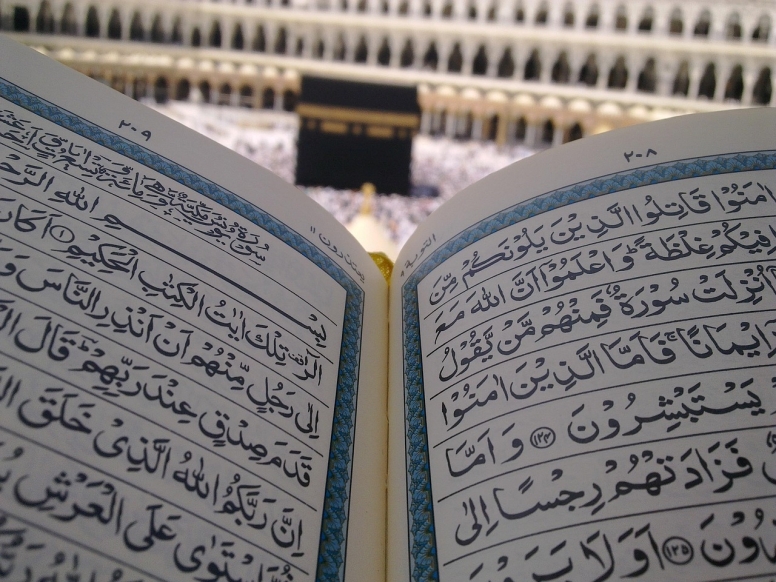
Life After Hajj
Completing Hajj is a new beginning. Muslims believe that a pilgrim who performs Hajj sincerely returns without any sins, as pure as a newborn child.
Many pilgrims receive the title "Hajji" or "Hajjah" after their journey. This title is a sign of respect and a reminder of their spiritual journey.
The experience of Hajj changes a person. The patience learned from the crowds, the humility from wearing simple clothes, and the feeling of standing equally before God leave a deep mark.
Pilgrims often return home with a stronger desire to do good. They pray more regularly, give to charity more often, and try to avoid arguments. The goal is to keep the peace and purity of Hajj alive in their daily lives.
It is a spiritual reset that many Muslims work towards throughout their entire lives.
Practical Information for the Pilgrim
Performing Hajj requires both spiritual and physical preparation. Here are some simple facts to know.
| Aspect | Key Information |
|---|---|
| Physical Preparation | Hajj involves a lot of walking in hot weather. Comfortable and strong shoes are very important. |
| What to Pack | Pack simple clothes, personal hygiene items, and a small bag for the pebbles used in the stoning ritual. |
| Staying Healthy | Drink plenty of water. Rest when you can. Be patient with the large crowds. |
| Mental Focus | Remember the reason for your journey. Focus on prayer, devotion, and being kind to others. |
What is one thing you find most powerful about the journey of Hajj?
Frequently Asked Questions
Why do pilgrims wear white cloths? The simple white garments (Ihram) remove all signs of wealth, status, and nationality. Everyone looks the same, showing that all are equal before Allah.
What is the most important day of Hajj? The Day of Arafat (9th of Dhul-Hijjah) is the most crucial day. Missing the standing at Arafat invalidates the entire Hajj pilgrimage.
Why do pilgrims run between Safa and Marwa? They walk briskly to remember Hajar's desperate search for water for her son. It is a powerful reminder of a mother's love and the reward for having unwavering faith in Allah.
What does the stoning of the pillars represent? It is a symbolic act of rejecting evil and temptation, following the example of Prophet Ibrahim (Alaihis Salaam), who drove Satan away by throwing stones.
Do pilgrims have to do everything in this exact order? The order is very important and is based on the practice of the Prophet Muhammad. However, there are slight differences in the sequence for different types of Hajj (Qiran, Tamattu, Ifrad).
Can non-Muslims go to Mecca?
No, the city of Mecca is sacred and restricted to Muslims only. This rule helps preserve its sanctity as a place of worship.
What is the Zamzam well?
The Zamzam well is the water source that God provided for Hajar and her son, Ismail, in the desert. Pilgrims drink this water during Hajj for its spiritual significance and blessing.
Why is the Kaaba the most important place in Islam?
The Kaaba is the first house built for the worship of the One God. It is the qibla, the direction that all Muslims face during their daily prayers, unifying them across the world.
What are the types of Hajj?
There are three main types: Ifrad (Hajj only), Qiran (combining Umrah and Hajj with one Ihram), and Tamattu' (performing Umrah first, then Hajj with a new Ihram). Most pilgrims perform Tamattu'.

